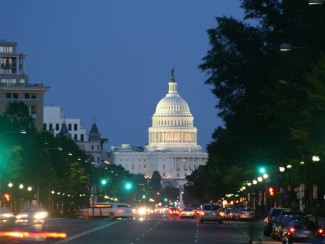A national energy efficiency standard could dramatically reduce carbon dioxide emissions, by an amount that exceeds those from all passenger vehicles in the United States for a year, ACEEE found in an analysis published today. The policy, which Congress could approve with a simple majority via a budget reconciliation bill, could also cut enough energy waste to save households and businesses about $160 billion on energy bills over the 2022-2050 period.
President Biden has proposed an energy efficiency and clean electricity standard (EECES), although details have not been offered. Today, 27 states have energy efficiency resource standards (EERS) that require electric and often gas utilities to save a certain amount of energy by providing incentives to customers who buy efficient equipment or weatherize their homes or buildings.
We developed the specifics of how this proven policy could be implemented nationally while meeting budget reconciliation rules and analyzed the impacts. We found that over the 2022-2050 period, a federal efficiency standard could reduce U.S. carbon dioxide emissions by 1400-2400 MMT (depending on how clean the U.S. power grid becomes). The lower end is equivalent to the carbon emissions from 304 million passenger vehicles in a year, while the upper end is equivalent to the combined annual emissions of Texas, California, Florida, Pennsylvania, Florida, Illinois, Ohio, New York, and Michigan. This is about double the emissions avoided by the most effective federal carbon reduction investments analyzed in our June 2021 fact sheet.
As described in a recent ACEEE policy brief, an energy efficiency standard can complement a clean energy standard because it reduces the amount of electricity demand that must be met with clean energy to meet climate and air quality goals. As a result, it reduces the cost of a clean energy standard to utilities and their customers and can enable greater carbon savings. It also provides many other benefits, such as increased home comfort and improved health.
Under our proposal for a federal standard, Congress would authorize the Department of Energy to set customized energy efficiency targets for medium and large electric and gas utilities (about 373 electric and 165 gas utilities); smaller utilities would not be covered. Each utility’s 2022 target is based on the savings it achieved in 2021. Starting in 2023, each utility’s target for new savings would increase by 0.25% each year, up to specified caps. A utility’s total energy savings would grow rapidly as new savings combine with continued savings from previous years’ measures still saving energy.
A utility achieving savings in excess of its target would receive payments from the federal government; a fee would be charged for shortfalls. We expect that federal payments and fees would approximately balance each other.
A federal energy efficiency standard is an important component of efforts to meet the new U.S. goal under the Paris Agreement of reducing greenhouse gas emissions by 50-52% by 2030, compared to a 2005 baseline. Achieving this climate target will be difficult, even using all available tools. But without a federal energy efficiency standard, meeting the target would be more expensive, more wasteful, and less likely.




